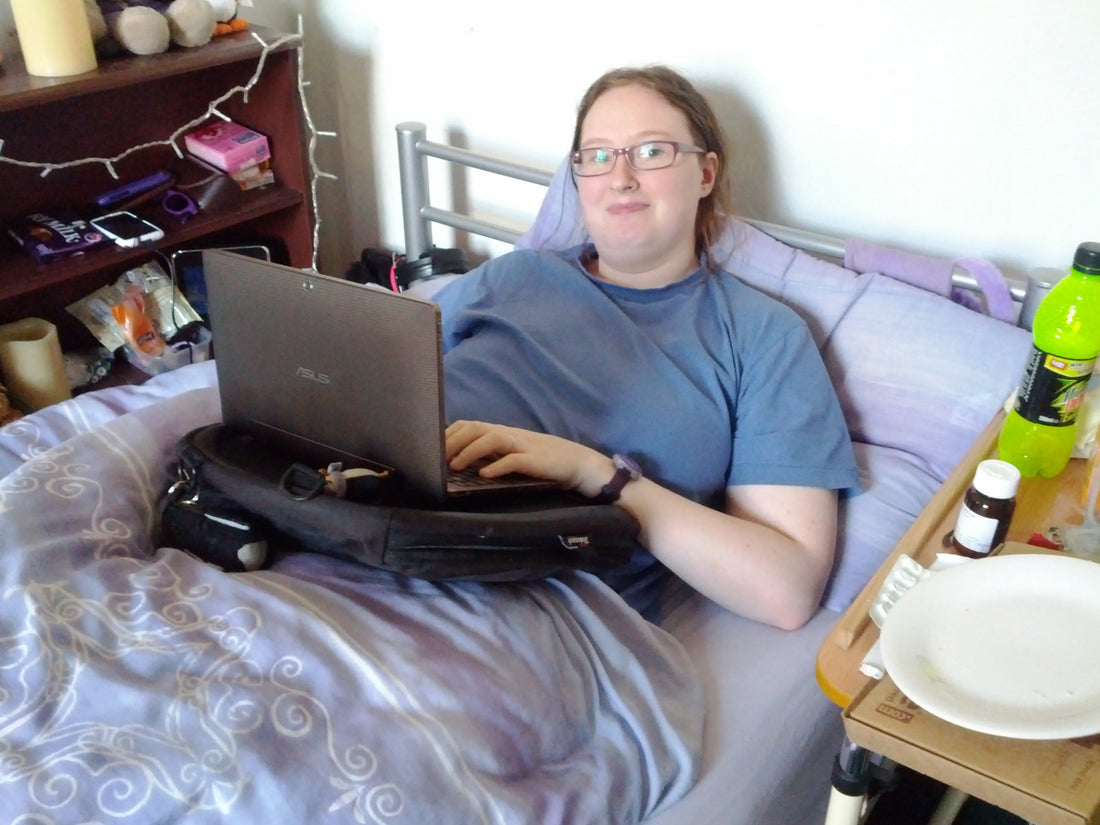
Keep Comfortable at Night and Sleep Better: Ideas for Disabled People
Share
Best Bedsheet Options and Bedtime Comfort Ideas for Disabled People
For many disabled people, good sleep depends on more than just a mattress. Bedding can influence everything from skin health to independence. With the right setup, pressure points are better managed, repositioning becomes easier, and it's easier for carers if they help at night.
Understanding Sleep Needs
Repositioning in bed can be difficult when bedding clings or causes friction. Sensitive skin benefits from smoother fabrics. Incontinence protection, temperature control, and comfort all have to work together. Some people can't adjust their bedding themselves, so what they sleep on needs to do more of the work for them.
Caregivers also rely on bedding that’s simple to change and maintain. The goal is to keep everyone comfortable, clean, and safe — without turning basic tasks into physical strain.
Supportive Bed and Mattress Options
Profiling Beds
These beds allow separate adjustment of the head, torso, and legs. Many can be raised or lowered to help with transfers. That makes them practical for both the user and any support worker assisting with care.
Pressure Relief Mattresses
Foam or air-cell mattresses help spread weight across the surface to prevent sores. Higher-risk users may benefit from alternating pressure models that gently shift support throughout the night.
Sheets That Support Movement and Hygiene
Low-Friction and Mobility-Assist Sheets
Easy Move Sheets reduce drag across the skin. A central panel supports movement while side zones help keep the user safely in place. These sheets are useful for people who turn themselves or are repositioned by others.
SIBA® Sheets are made from smooth fabric that helps with movement. They’re designed for both assisted and independent repositioning.
Slide Sheets
Slide sheets come in two-way and four-way versions. They make turning and lifting less effort for carers, and reduce friction for the person in bed. Many people with conditions like multiple sclerosis or Parkinson’s find them helpful for comfort and control during the night.
Waterproof Sheets
Modern waterproof sheets use quiet, soft materials and hidden barriers. They protect against spills and incontinence while allowing airflow to the skin. These sheets can be washed at high temperatures to keep hygiene levels high.
Accessible Sheet Designs
QuickZip and similar designs allow the sheet surface to be zipped off without lifting the mattress. For users with limited dexterity, this makes changing the bed quicker and less frustrating. Some systems also use tactile labels for sorting by size and colour.
The Simba Hybrid™ Duvet

The Hybrid™ Duvet is lightweight and warm, making it suitable for all seasons.
The Hybrid™ Duvet is soft and warm without the weight of traditional covers. This can make a real difference for disabled people who find it difficult to move or adjust heavy bedding during the night. It’s designed to feel cosy without causing overheating, thanks to Stratos® cool-touch fabric that helps regulate temperature for people who struggle with heat sensitivity or limited mobility.
It’s fully machine washable and dries quickly, which is especially useful for those managing incontinence, allergies, or needing to maintain high hygiene standards. Whether used in a home or care setting, it’s made to be practical, long-lasting, and easy to manage — without giving up comfort.
Comfort Aids and Safety Supports
Pillows and Wedges
Specialist pillows can reduce pressure on joints, elevate limbs, or provide lumbar support. For people who struggle with muscle tone or joint stiffness, they offer much-needed relief.
The Simba Hybrid™ Pillow offers adjustable support that can be tailored to different needs. Its Nanocube® foam filling lets you remove or add material to change the pillow’s height and firmness — helpful for people who need specific head or neck positioning due to pain, muscle tone issues, or limited mobility. This flexibility can also support better breathing and posture during sleep.

The down-like outer layer provides a soft, pressure-relieving surface, while Stratos® cool-touch fabric helps prevent overheating — especially important for those who can't easily adjust their bedding at night. The breathable mesh sides improve airflow, and the washable cotton cover makes it easier to keep clean in both home and care settings.
Grab Handles and Bed Rails
Getting into or out of bed safely often requires something solid to hold. Rails and grab handles give users more control over movement and make assisted transfers safer.
Overbed Tables and Bedside Trays
For people spending long hours in bed, these surfaces provide a place to eat, read, or use devices comfortably. They're practical and can make the bedroom feel more functional.
The best and most versatile bed table is the trabasack lap tray. It can be used in bed or on the move and is very easy to put in place and remove whilst lying down.

Image Credit https://dannilion.com/
Fabric and Cleaning Considerations
Choose Breathable Fabrics
Natural fibres like cotton and bamboo let skin breathe and reduce overheating. This is important for anyone who can’t shift easily or adjust covers overnight.
Durability and Hygiene
Bedding needs to cope with regular washing. Hospital-grade sheets are made for high temperatures and frequent use. Single-ply designs tend to hold up better than high thread counts when washed often.
Guidance for Carers
Changing the Bed
When changing sheets with someone still in bed, roll them gently to one side, tuck in clean layers, and repeat on the other. Work slowly and check for discomfort. Keeping movement smooth helps reduce anxiety.
When to Wash Sheets
Weekly is the general standard, but daily changes may be needed if the bed is used for most of the day or if incontinence is involved. Use 60°C+ water and skip fabric softeners, which reduce moisture-wicking ability.
